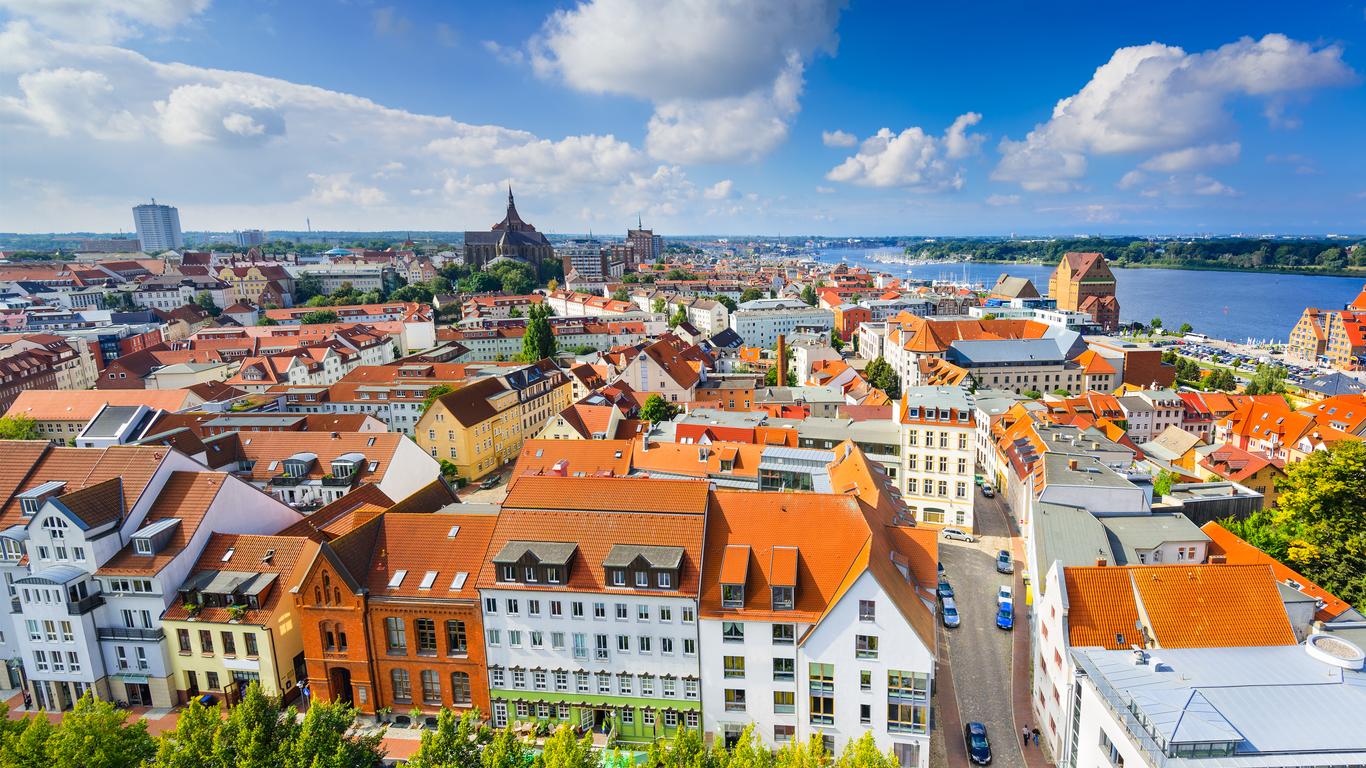Perched on the banks of Warnow River in northern Germany, Rostock is home to one of the world’s oldest universities, established in 1419. Its seaside district of Warnemunde, 12 kilometres from the city centre, draws sun-worshiping tourists and cruise ship voyagers who enjoy the old fisherman port, lighthouse and expansive sandy beach along the Baltic Sea coast.
Shoppers mingle, browse and explore the picturesque New Market Square, originally constructed in Brick Gothic style in the 13th century and remodelled with Baroque features in the 1700s. The Abbey of the Holy Cross complex offers a chance to visit an ancient abbey founded by Cistercian nuns, now housing the Museum of Cultural History. Ferries transport travellers to a variety of popular Scandinavian destinations throughout the year.
The city portion of Rostock spans about 20 kilometres along the Warnow River to the Baltic Sea, with most commercial areas lying on the western side of the river, and the wooded Rostock Heath green space dominating the eastern side. Major autobahn motorways to Rostock include the A1, A20 and A19, connecting to local roads. Fast-rail trains transport travellers to major cities such as Hamburg and Berlin, while a tram network, buses, ferries and a tunnel help visitors get around within the district.
An influential and economic shipping power of the 14th century, Rostock developed industrial plants and shipyards, making it a target for destruction centuries later during World War II. Many historic structures never recovered, though six original gable houses from the 15th and 16th centuries still stand in the market square. Other Hanseatic-style homes surrounding the square didn't survive an Allied air raid in 1942.





